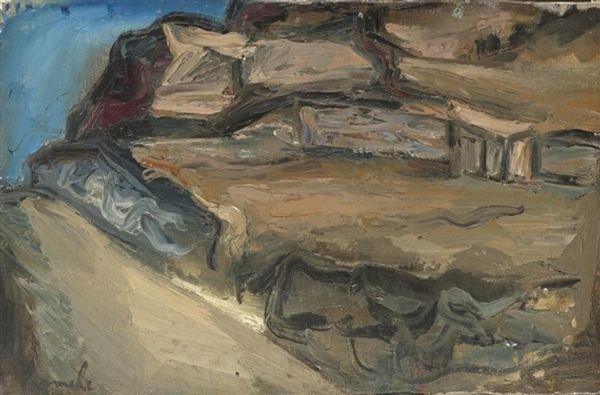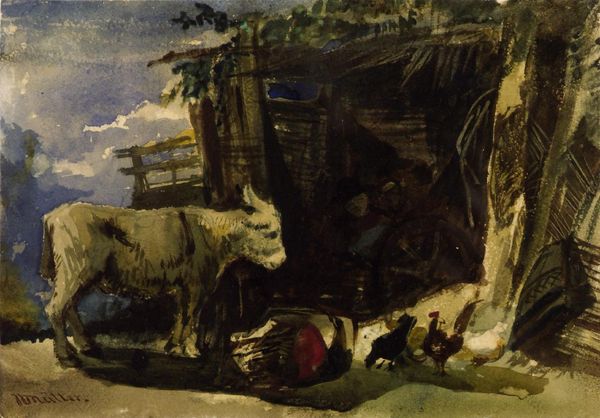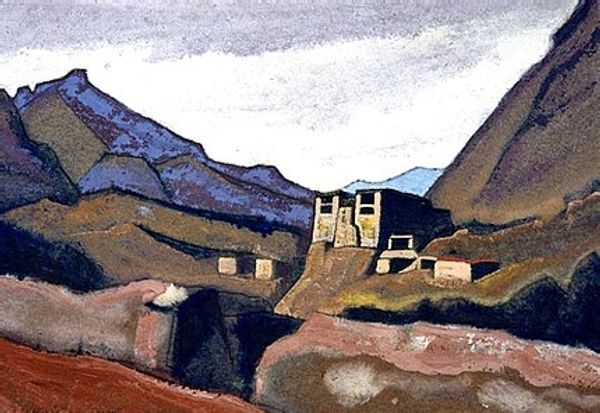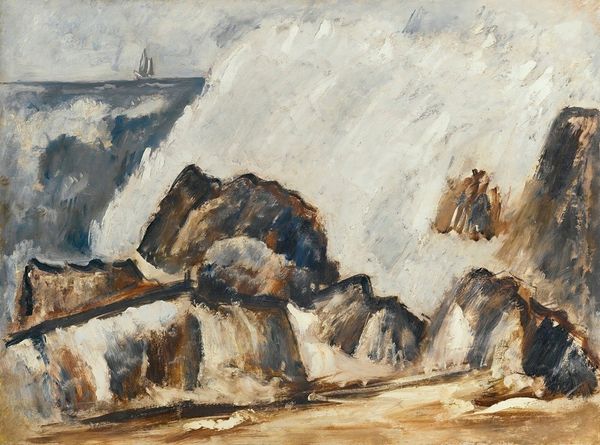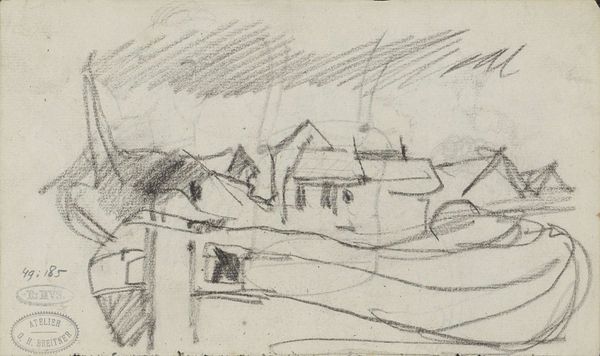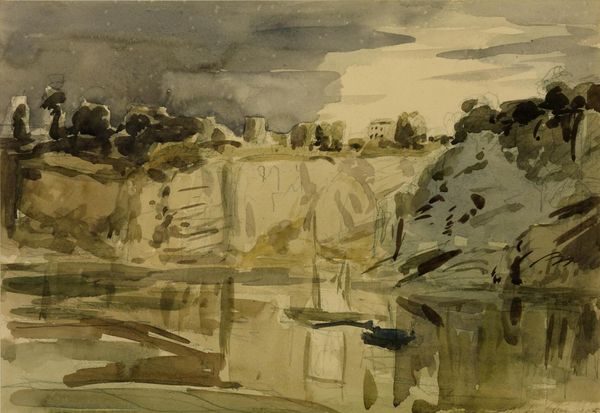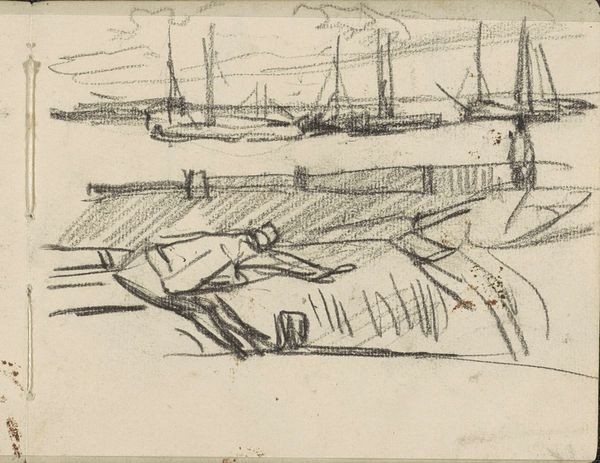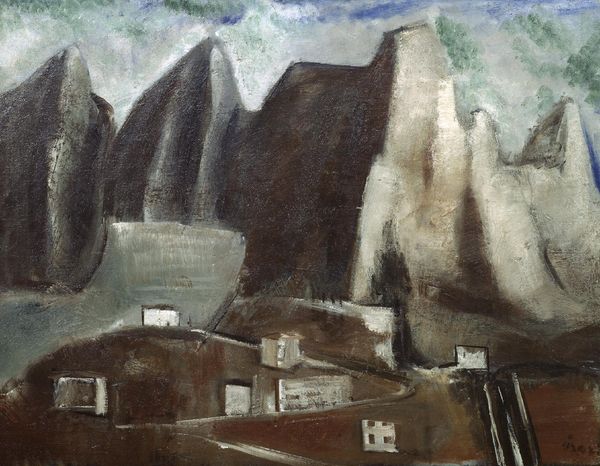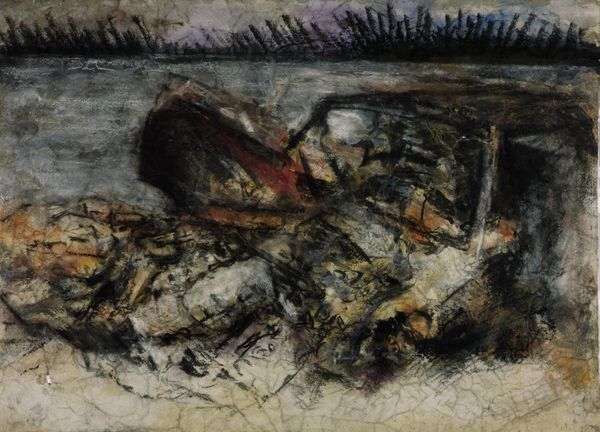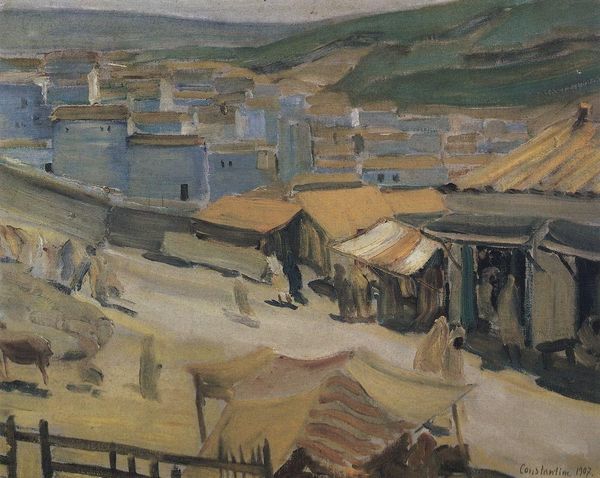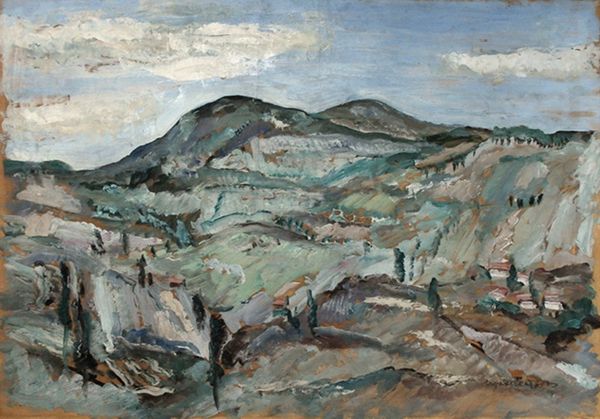
Copyright: Public domain
Editor: Here we have Paul Cézanne’s "Landscape of Provence," created around 1870 using oil paint. It strikes me as somewhat austere, almost brutally simple in its forms. What do you see in this piece? Curator: It's a landscape seemingly devoid of human presence, isn't it? Painted during a period of immense social and political upheaval, like the Franco-Prussian War, I can't help but see it as a reaction to that chaos. Notice the emphasis on solidity, the block-like forms? Editor: Yes, the buildings seem less like dwellings and more like geometric solids. Almost as if the land and structures are merging. Curator: Exactly! Consider how that flattening and simplification prefigures cubism, how it dismantles traditional perspective, challenging academic conventions of the time. What does that suggest to you about Cézanne's project, about art’s potential to resist dominant ideologies? Editor: It's like he's stripping away the surface, searching for the underlying structure… the bones of the landscape, perhaps even critiquing the rapid industrialization by showcasing the foundational elements? Curator: Precisely. And within that stripping away, he's asserting a certain power. What do you think that might be? Is he making a political statement with the landscape genre itself? Editor: I hadn’t considered that. Thinking about the historical context definitely shifts how I see the painting, moving away from just a scenic view to a potential commentary on societal instability and a reimagining of form itself. Curator: And for me, it reaffirms the ongoing importance of interrogating art historical narratives.
Comments
No comments
Be the first to comment and join the conversation on the ultimate creative platform.
